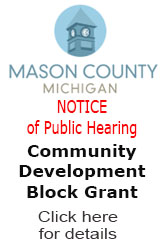 ANN ARBOR — The Great Lakes Water Safety Consortium has released its top water safety tips during the National Weather Service’sBeach Hazards Awareness Week.
ANN ARBOR — The Great Lakes Water Safety Consortium has released its top water safety tips during the National Weather Service’sBeach Hazards Awareness Week.
“There’s much more to being safe in the water than knowing how to swim,” says Jamie Racklyeft, executive director of the Great Lakes Water Safety Consortium and rip current survivor. “As summer vacation season gets into full swing with the warmer temps, we want everyone to know how to avoid, escape, and safety save others from dangerous waves and currents as part of our collective efforts to end drowning in the Great Lakes. And we have more than 450 reasons for doing what we do.”
Since 2010, there have been more than 450 tragic stories of drowning in the Great Lakes, including Marty Jordan, a 45-year-old social worker on vacation from Illinois, who was caught in a structural current along South Haven pier with five children who he managed to save with help of bystanders on the pier before succumbing to the waves. Matthew Kocher, 15, was earning community service hours for high school at camp in 2013, when this “gentle giant” was suddenly pulled away from shore by a Lake Michigan rip current. That same year, 13-year-old Jermaine Zirkle drowned in a Lake Erie rip current, in only a matter of minutes. In 2003, Andy Fox, 17, disappeared beneath the waves of Lake Michigan in Grand Haven during an after-school swim and never returned. And there are so many more.
Members of the Great Lakes Water Safety Consortium include more than 200 water safety experts and advocates from the eight Great Lakes states and Ontario, with a wealth of knowledge they have been compiling, consolidating, and are now sharing. Here are their easy-to-remember tips for a safer summer:
L I F E S A V I N G W A T E R S A F E T Y T I P S
Avoid Drowning – Be Current Smart
-
Know before you go – Check the National Weather Service for forecasts about dangerous waves & currents.
-
Stay dry when waves are high – Whitewater/waves as little as two to three feet high can generate dangerous currents.
-
When in doubt, don’t go out – Respect the power of the water and don’t take chances.
-
Buddy up – Never swim alone, there’s safety in numbers.
-
Steer clear of the pier – Most current-related incidents occur near structures.
Escape Drowning – Be a Survivor
-
Don’t fight the current – Even Olympic swimmers can’t overcome the power of rip currents.
-
Yell for help – Call for help as soon as you realize you’re in trouble – the closer you get to drowning, the harder it will be to yell.
-
Flip, float and follow
-
Flip – Flip over onto your back and stay calm.
-
Float – Float to keep your head above water and conserve energy.
-
Follow – Follow the safest path out of the water – swim to the side (parallel to shore) and if too tired to swim, keep floating.
-
Safely save others from Drowning – Don’t Become a Victim
-
Be a water watcher – Designate someone to watch people in the water as their sole responsibility.
-
Drowning doesn’t look like drowning – Know the signs of drowning – it’s not like Hollywood with lots of yelling and waving – it’s actually subtle and silent.
-
Save yourself first – Don’t become a victim trying to save someone else – only go out with a flotation device (e.g. life ring, kayak, surf/paddle board, cooler, soccer ball) and keep it between you and the victim; have someone call 911 to get more help on the way. Wear a life jacket if available.
-
Preach, reach, throw, row – Shout to the victim that help is on the way, try to reach them with a pole or rope, throw them a floatable, get to them on a board or in a boat/kayak/canoe.
For more information, visit the National Weather Service’s new interactive Great Lakes Beach Hazards page, the Great Lakes Surf Rescue Project page for drowning statistics and expert water safety training, and the Great Lakes Water Safety Consortium’s Resources page for a downloadable brochure with these lifesaving water safety tips and more.









































 (1).gif)











.png)







